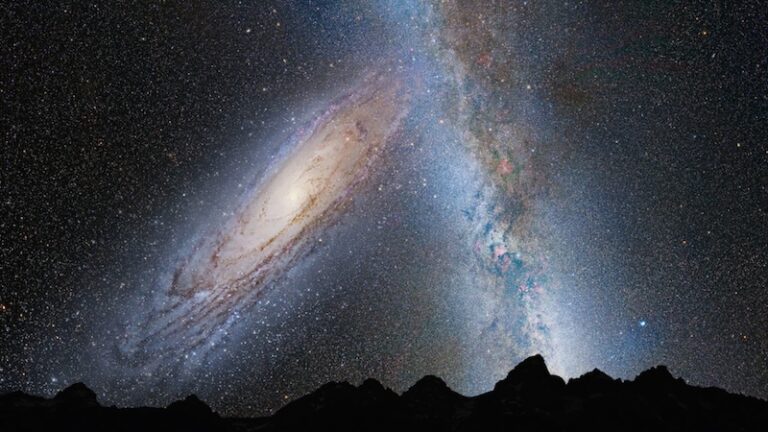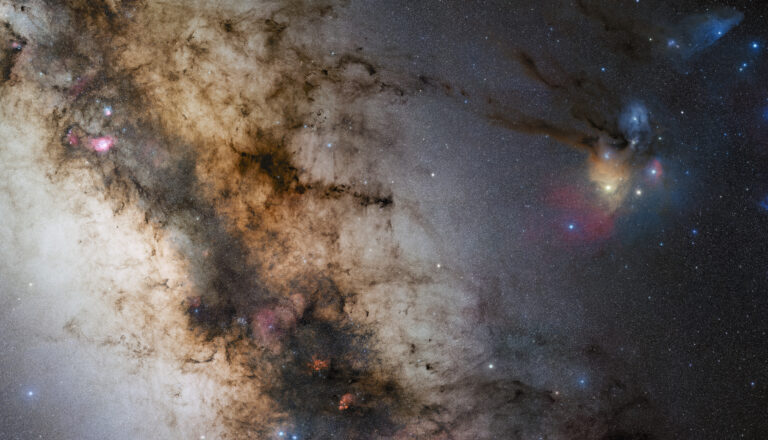Key Takeaways:
Located 10,000 light-years from Earth, this stellar jet with an opaque, winding appearance was captured by the Gemini South telescope. A stellar jet is created when the magnetic field of a rotating young star interacts with the plumes of gas surrounding each one. The ionized gas then spits into opposite directions from the star’s poles, emitting cloud-like formations.
The featured jet is named MHO 2147 and lies in the plane of the Milky Way in the constellation Sagittarius. Astronomers think its curved appearance is due to the gravitational pull of stars surrounding a central star, named IRAS 17527-2439. Over time, the tug of its companion stars cause the central star to slowly wobble over time, like a spinning top. Stellar jets usually appear straight but may appear to wander based on the type of object or objects that created it.
Gemini South, in the Chilean Andes, is one half of the International Gemini Observatory. (Its counterpart, Gemini North, is atop Mauna Kea in Hawaii). The 8-meter scope caught the scene using the Gemini South Adaptive Optics Imager, an instrument that uses a technique to cancel out the blur and distortion from atmospheric turbulence.










